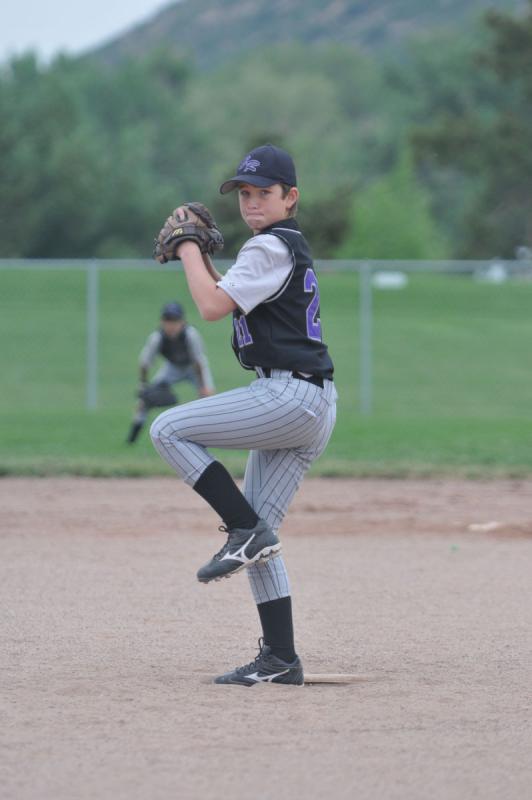One important way for youth baseball coaches to prevent overuse injuries to pitchers is to look for signs that the pitcher is tired.
While fatigue, like pain (another early warning sign of overuse injury), is generally difficult to quantify because it is a subjective, a coach can use pitch counts,
ball velocity, ball location, pitching mechanics, and strength as guides in determining fatigue.

In the best of all possible worlds, a youth pitcher will tell you he is tired. The reality, as all those who follow baseball at any level, up to and including MLB (e.g. Pedro Martinez, bottom of 8th inning, Game 7 of the 2003 ALCS), youth pitchers, like most athletes, are generally reluctant to tell coaches they feel tired, even when not telling might hurt both the team and the player. If a pitcher complains of being tired or looks tired, it's a sure sign he needs to stop throwing (not just as a pitcher but completely) and get some rest.
In most instances, it will be up to the coach to use his observational skills and judgment to detect signs of fatigue.
A tired pitcher:
- exhibits significantly less maximum shoulder rotation and knee flexion and a slightly more upright trunk position at ball release;
- consistently elevates his fastball. One pitching expert says that as a general rule if a young pitcher unintentionally elevates his fastball significantly (4-6 inches) for two hitters in a row, a visit to the mound is in order. If the pitcher fails to make an adjustment on hitter #3, he takes him out;
- throws from a different arm slot/angle;
- begins to miss locations high and low; pitches wild high and inside to the arm side and wild low and outside to the glove side, says pitching coach Ron Wolforth, are "almost always a sign of significant fatigue and mechanical inefficiency."
- relies less on the lower body and more on the arm (which puts more strain on the arm); and
- experiences a drop in velocity. One prominent baseball expert recommends taking a pitcher out when the drop of average radar velocity exceeds 3% mph. (although the use of radar guns is not generally recommended).
1. Fortenbaugh D, Fleiseg G, Andrews J. Baseball Pitching Biomechanics in Relation to Injury Risk and Performance. Sports Health: A Multidisciplinary Approach 2009;1: 314-320.
Posted March 15, 2011








